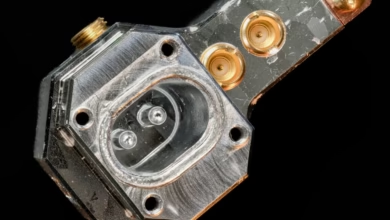Microsoft’s Roadmap to Practical Quantum Computing

▼ Summary
– Microsoft’s Azure Quantum announced a plan for quantum error correction that works across multiple quantum computing technologies, excluding its own hardware.
– The proposed system aims to improve error rates from 1 in 1,000 to 1 in 1 million for logical qubits, though it hasn’t been tested on actual hardware yet.
– Atom Computing, a partner, confirmed its hardware can perform the necessary operations for Microsoft’s error correction scheme.
– IBM’s error correction approach differs by using custom chip-based hardware with fixed wiring layouts, while Microsoft’s solution accommodates varied hardware types.
– Some of Microsoft’s partners, like Quantinuum and Atom Computing, use movable qubits, enabling flexible error correction schemes unlike fixed-layout systems.
Microsoft has unveiled a strategic approach to implementing error correction in quantum computing systems, marking a significant step toward practical quantum applications. The company’s Azure Quantum team revealed a method capable of transforming hardware qubits with error rates of approximately 1 in 1,000 into far more reliable logical qubits with errors reduced to just 1 in 1 million. This breakthrough could accelerate the development of viable quantum solutions across industries.
Unlike competitors such as IBM, which designs both hardware and software for its quantum systems, Microsoft’s Azure Quantum platform integrates diverse quantum technologies from multiple providers. This flexibility allows the company to adopt an error-correction scheme compatible with various quantum architectures, though notably excluding Microsoft’s own in-development hardware. While the approach has been validated through mathematical models and simulations, real-world testing on physical hardware remains pending. Partner company Atom Computing has confirmed its systems can support the required operations, signaling promising progress.
The distinction between Microsoft’s strategy and IBM’s lies in hardware adaptability. IBM relies on fixed wiring layouts in its chip-based quantum processors, limiting error-correction options to those compatible with predefined connections. In contrast, Microsoft’s platform includes technologies like those from Quantinuum and Atom Computing, which use movable atomic qubits. These systems enable dynamic reconfiguration of qubit connections, opening doors to more versatile error-correction methods.
This announcement highlights Microsoft’s commitment to fostering a scalable quantum ecosystem rather than locking into a single hardware approach. By prioritizing cross-platform compatibility, Azure Quantum could offer businesses earlier access to stable quantum computing resources, even as the underlying technologies continue evolving. The roadmap underscores how varied quantum architectures may coexist, each contributing unique strengths to overcome the field’s most persistent challenge: error management.
(Source: Ars Technica)






